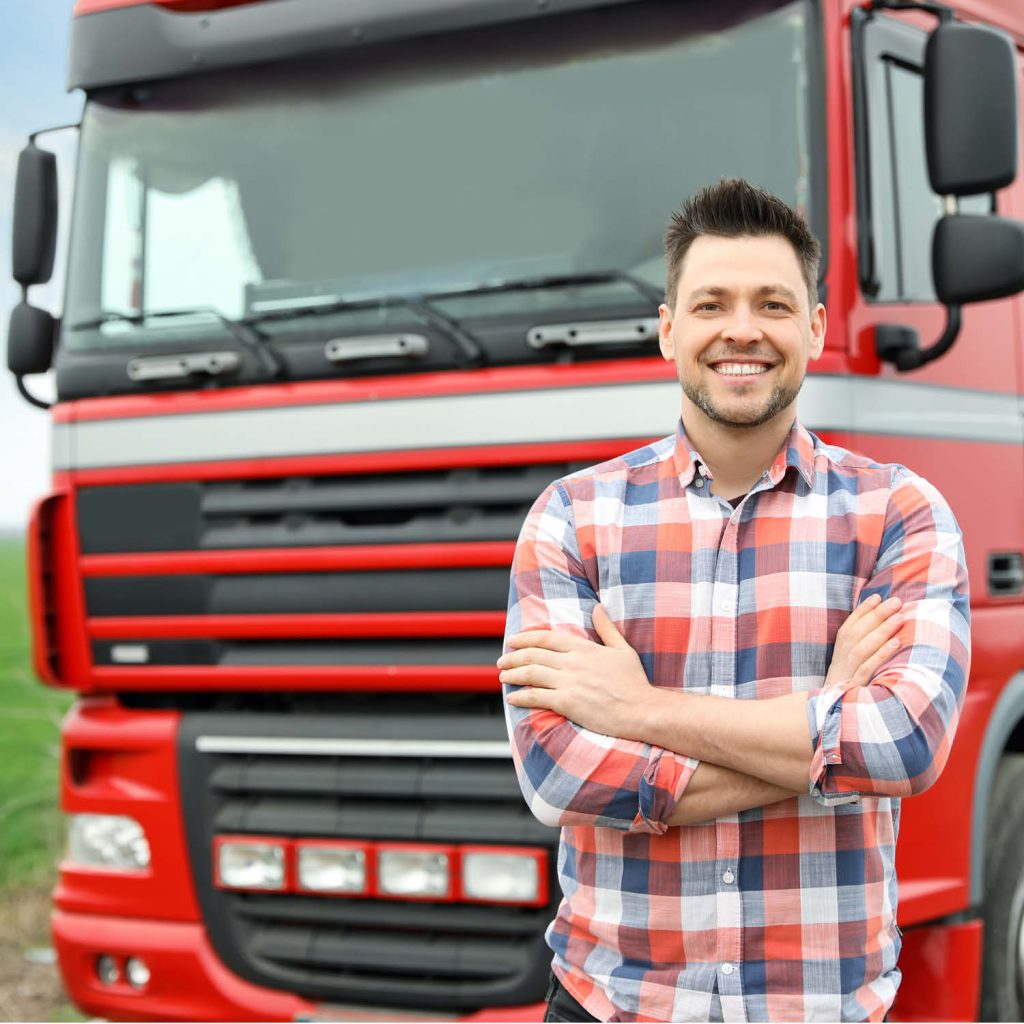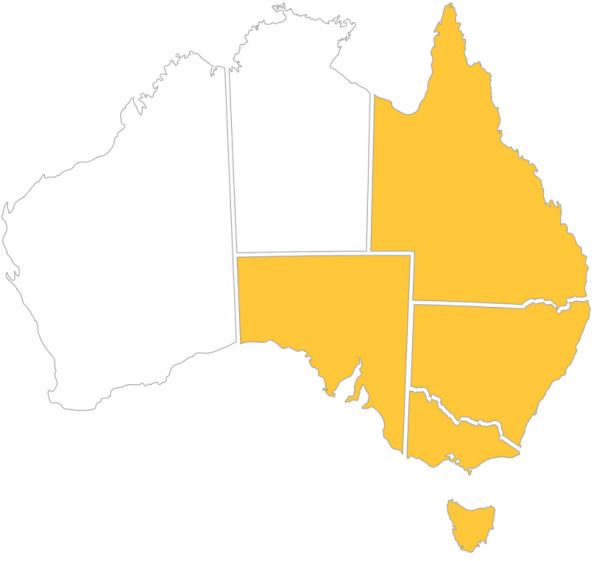![]() Powering On-Road Safety Solutions
Powering On-Road Safety Solutions
What Does HVNL Mean?
Chain of Responsibility isn't just a good idea - It's the LAW!
The Heavy Vehicle National Law (HVNL) is the law governing participating jurisdictions in Australia, all vehicles over 4.5 tonnes. This law aims to encourage and promote a culture shift, which will improve the safety and efficient transport of goods around Australia.
The HVNL currently covers PBS vehicles, IAP, road access permits, accreditation, paperwork, vehicle operations (standards and safety, weight, packing, dimension, fatigue management), compliance, fines, penalties and general administration matters. The elements within the legislation that supports the law, provide detail surrounding;
- Fatigue management;
- Mass & dimension;
- Safe loading;
- Registration & Vehicle Standards; and
- Performance-Based Standards (PBS) vehicles.

Maximum Penalties
As of January 2021, we have seen multiple enforceable actions undertaken by the Heavy Vehicle Regulator and multiple court cases outlining serious offences, for what in the past would be deemed as inconsequential of a logistics activity. This has included multiple cases brought before the court where the prosecution are pressing for a conviction of a Category One, Two and Three offence. Each of those Penalties is;
Company
- Category 3 - $500,000
- Category 2 - $1,500,000
- Category 1 - $3,000,000
Individual
- Category 3 - $50,000
- Category 2 - $150,000
- Category 1 - $300,000 + Jail (Max 5yrs)
Each offence carries a penalty, which means two offences carry twice the penalty potentially. Importantly, the code is a criminal code, which means any entity prosecuted must be proved guilty beyond doubt, but will also carry with them a criminal conviction.
What we have also seen with recent cases, is that the courts will seek to prosecute the directors first, then the company with those further down the chain next. In a recent fatigue case the director of a transport company, which was not actively involved in the company, was successfully prosecuted on the basis that they knew of the ongoing issue within the company, even though the defence argued against that.

The HVNL clearly sets out that an executive must ensure so far as reasonably practicable that all measures are made available to ensure a safe transport task, within the logistics network they influence. In this case, even though the director did not actively involve himself, it was deemed that his duty was to know, understand and ensure safety in his entire business.
It is the requirement of the Executive that due diligence be made, to ensure a safe transport task.
Don’t let the good news stop there though. The legislation actually holds a further 334 penalties under which fines exceed $1,680 and cap at $22,430 for each offence. Of note a waste company was fined for 73 offences relating to 50 over mass breaches, some of which occurred on the same day. More can be read here, but to sum up the total cost attributed through this case to the on penalties alone was $732,206.
Various Companies Which Have Faced CoR Prosecutions
Executive Liability
An executive means:
(a) director of the corporation; or
(b) any person, by whatever name called and whether or not the person is a director of the corporation, is concerned or takes part in the corporation’s management.
In real terms, if a person has budgetary control within the company and can allocate funds or make an argument to do so, that person is highly likely to be considered an Executive for the purposes of being able to take part in the management o a company. For example, that person could make an argument to change where a company spends its resources to promote safety.
The HVNL requires an executive of any entity that effectively has a transport task running within that entity, which also has a safety duty under the HVNL, to exercise “due diligence”, ensuring that the relevant entity complies with its safety duties.
“Due diligence” involves, among other things:
- Knowing what the entity is doing to ensure that its transport operations are secure within its safety framework;
- Understanding the dangers and hazards to which the organization is exposed within the transport role and making sure that it has and uses sufficient resources to remove or mitigate such hazards and risks; and
- Checking that the entity is actually supplying, utilizing and enforcing the tools and processes implemented by the entity to manage and address safety and that they are successful in removing or mitigating defined hazards and risks.
- Know the obligations of their company under the HVNL and understand what they mean for their company;
- Ensure that the company has a framework that defines, assesses and handles risks in relation to safety and transport activities;
- Ensuring that their organization implements a monitoring system to alert workers and other CoR parties of HVNL breaches
- Keep up to date regarding any emerging HVNL violations and remedial measures;
- Ensure that the company has sufficient facilities and procedures to satisfy the HVNL requirements, including loading restraint procedures and effective load measuring controls;
- Ensure that their employer provides workers and vendors with training and advice on their HVNL responsibilities and actions they may take to comply with these obligations. This should require training appropriate to the position. For instance, role-specific training could include providing additional training to schedulers and managers to avoid advising or influencing drivers to disregard fatigue requirements, providing work and rest time regulations training, and providing information on identifying signs of fatigue; and
- Managers should ensure that their organisations review their risk management, preparation and monitoring processes in order to ensure that they function efficiently, and as they were designed.
Does the HVNL affect my State?
Currently, while the HVNL is a moving piece of legislation, it only has jurisdiction in NSW, Victoria, Queensland, South Australia, Tasmania and the ACT. Western Australia and the Northern Territory fall under their own set of rules and have differing legislation about how the laws govern safe roads.
While the HVNL has not begun in Western Australia or the Northern Territory at this time, as it enters into one of the states or territories where the HVNL operates, the HVNL applies similarly to vehicles originating from those jurisdictions. In certain situations, before reaching the border, drivers might even need to comply with some elements of the HVNL (eg. work diary requirements).

A message from the director of MAEZ, Matthew Wragg
“Your prospective customers don’t ask about the cost in their first line of questioning anymore. They ask about YOUR safety system.” Chain of responsibility impacts the entire Supply Network, are you ready to provide your safety detail?
Is your business involved in "transport activities"?
It is well understood that the concept of ‘Chain of Responsibility’ (CoR) drives the HVNL. In order to regulate the operation of heavy transport vehicles, the CoR places certain legal obligations on all parties in the transport and logistics supply chain.
The CoR shifts responsibility from the traditional paradigm of the owner/operator to a shared responsibility for all parties in the supply chain who control or influence the work of heavy vehicle transport. That is, all liable parties to the Chain of Responsibility share legal liability for the safety of transport and logistics activities.
The amendments introduce a new concept of “transport activities” liability. This implies that for any activity, including business practices and decision making, associated with the use of a heavy vehicle on the road, there is a primary safety duty. This includes, for example, anyone who asks for heavy vehicles to deliver goods or services, on their behalf.
This impacts any company, organisation, executives and managers in any industry that employs a transport task with vehicles exceeding 4.5 Tonne